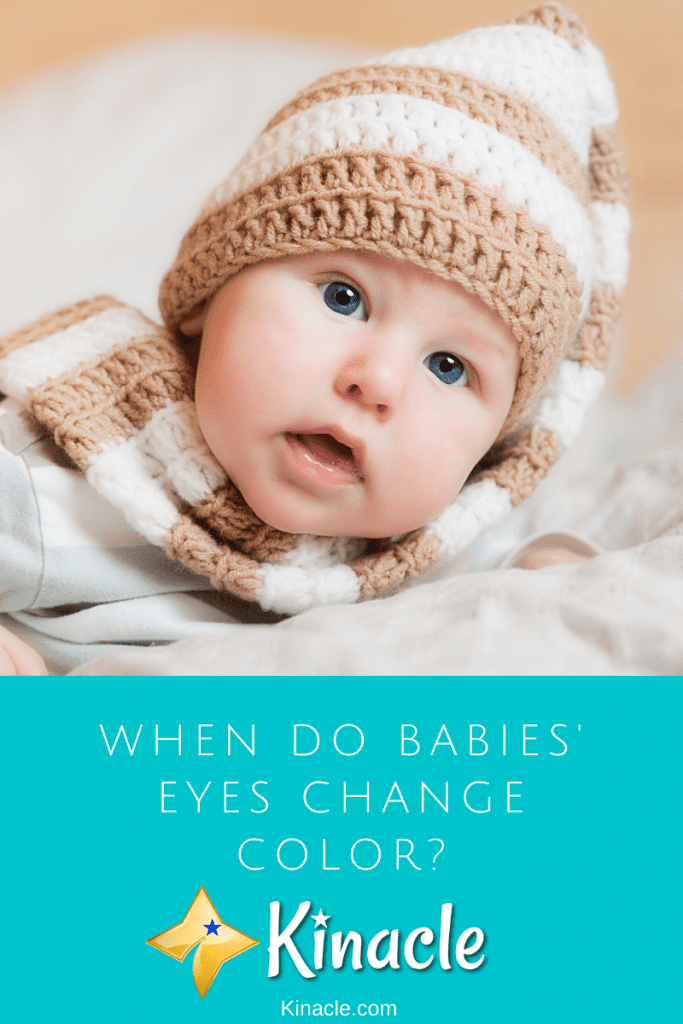
This was a reader-submitted question. To have your question answered for free, read through this post to the end!
Whenever the newest addition to the family comes, one of the much-anticipated events is guessing the baby’s eye color. Parents are always fascinated by their baby’s eyes upon birth. Who wouldn’t be? But here’s something that may thrill you more. Babies’ eye color can actually change. So if this is something that interests you as a parent, hang in there! We’ll explain why and when a baby eye color change.
Do babies eyes change color?
According to experts, babies’ eyes can change their color over a certain period of time. Babies who were born with a lighter eye color may grow with a darker shade of hue in their eyes. How was this possible?
It’s not some sort of magic or an old wives’ tale. Scientists confirmed that this fascinating change is due to the production of the pigment that is responsible for giving the eye color. This pigment is called melanin and it is produced by the special cells in the body that are called melanocytes.
Though most babies are born with almost the same number of melanocytes, the rate into which they produce, transport and store melanin in different areas of the body may differ per individual. Melanin are stored in some special compartments called melanosomes. These compartments can be found in several areas of the body and these include the iris of our eyes.
The amount or concentration of melanin in the melanosomes of our body determines the color shade of our eyes, hair, and skin.
If melanin is concentrated, we would have a darker or browner skin, hair, and eyes. So typically, the Asian, African, and Hispanic people have more melanin deposits in their bodies. You can see that most of them have light to dark brown eyes.
On the other side, if melanin is less concentrated, we will have a fairer or lighter skin, hair, and eyes. This is true with the Caucasian or European people who often have gray, blue, green, or hazel-colored eyes.
Though babies are born with a pre-determined presence of melanin, the melanocytes often respond to light. It’s common for Caucasian or European babies to be born with blue or gray eyes because of their genetic makeup and because their melanocytes aren’t exposed to light inside the womb.
After birth, their melanocytes start working and gradually secrete more melanin in their bodies. This is why some blue or gray-eyed babies eventually shift to having green or hazel eye colors. If the melanocytes leveled up their work, these babies may end up having brown eyes too. Now that’s something exciting!
When do babies’ eyes change colors?
According to experts, it usually takes about a year before the melanocytes complete their color painting job. The most obvious changes are often observed within 6 months after giving birth, but the melanocytes are still secreting little amounts of melanin up to a year or more.
So now you understand why your doctor won’t guess what the eye color will look like until your baby is old enough to have a stable eye color.
Can babies eyes change color from dark to light?
When it comes to the baby eye color change progression, experts suggest that it only happens from a lighter to a darker shade. It means that gray or blue eyes may progress to become green, hazel or brown colored eyes. However, if your baby is born with brown eyes, it is not typical for the eyes to revert to a lighter hue. Again, this is due to the melanocytes. Their work is to secrete melanin and the more they are produced, the darker your baby’s eye color will become.
Can babies’eye color change in response to mood?
You might have heard that a person’s eyes somewhat change in color when he gets mad. This might also be true for your baby. This is possibly due to the reaction of the iris, the part of the eye that is responsible for eye color.
Apart from portraying the eye color, the iris has a more important job to perform. The iris is a muscular structure that controls the dilation and constriction of the pupil of the eye in response to light. If the eyes are looking in a very bright object or surroundings, the iris will compress to minimize the light that will come inside the pupil and prevent eye damage. If the surroundings are too dark, the iris will relax to help the pupil dilate and see better in the dark.
A similar phenomenon happens in response to the person’s emotions. When we get angry, our pupils tend to constrict. When relaxed or happy, our pupils tend to dilate. This dilation and constriction can affect the color dispersion in the iris of our eyes.
So based on this explanation, we can say that a baby’s eye color may change in response to their mood too. It can be a bit darker when they are upset and a bit lighter when they are relaxed.
Conclusion
Babies’ eyes can change from a light to darker color up to one year of age or even later, depending of the production, distribution, and storage of melanin in the iris of their eyes. Will they look like mommy’s or like daddy’s eyes? Who knows? Your baby’s eye color may end up a lot more than what you’ve expected.
Let Us Answer Your Question!
Would you like us to answer your question? Send it in by filling out the form here and if selected, we’ll let you know when it’s live on the site!
In the meantime, please feel free to join our forum, where you can receive support and have discussion, as well as get answers from other parents just like you. Our community is pretty great, and we’d love to have you as a a part of it! Join for free by clicking here.
Leave a Reply